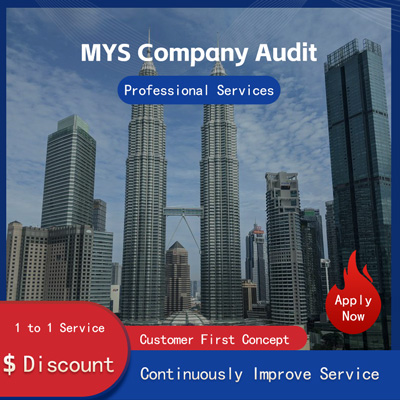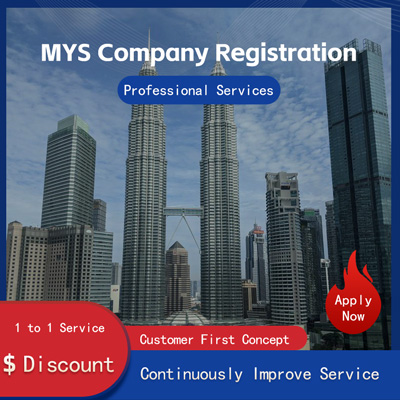
In-depth Analysis of US Company Withholding Tax Tax Risk Mgmt. Compliance Guide
In-Depth Analysis of U.S. Withholding Tax for Corporations Managing Tax Risks and Compliance Effectively
In the context of global economic integration, more and more companies are engaging in cross-border operations. For businesses involved in the U.S. market, understanding and properly managing the U.S. withholding tax system is a crucial part of tax compliance. Especially in recent years, as U.S. tax policies continue to evolve and international tax transparency improves, corporate tax risks have gradually increased. Effectively managing U.S. withholding tax obligations and ensuring compliance have become key concerns for many multinational enterprises.

What Is U.S. Withholding Tax?
U.S. withholding tax refers to the tax that must be withheld by a payer on payments made to non-U.S. residents or foreign entities, which is then submitted to the Internal Revenue Service IRS. This mechanism primarily applies to income types such as dividends, interest, royalties, and rents. For example, if a Chinese company pays service fees to a U.S. supplier, it may be required to withhold income tax at the standard rate of 30%, unless a lower rate is available under a tax treaty between the two countries. According to Section 1441 of the U.S. Internal Revenue Code, any entity or individual conducting business activities in the U.S. has an obligation to withhold and remit taxes when making certain payments to foreign persons. Failure to fulfill this obligation can result in significant penalties and interest charges.
Recent Developments and Regulatory Enhancements
In recent years, U.S. tax authorities have intensified their scrutiny of cross-border transactions. In 2025, the IRS announced enhanced audits targeting multinational corporations, particularly in areas such as the digital economy, intellectual property transfers, and the movement of intangible assets across borders. At the same time, with the gradual implementation of the OECD-led Global Minimum Tax Agreement, countries have placed greater emphasis on monitoring cross-border profit shifting.
Notably, in early 2025, the U.S. Treasury issued new guidance aimed at improving foreign account reporting and information exchange, further clarifying specific requirements for withholding tax reporting. These measures not only strengthen financial institutions’ disclosure obligations but also impose higher standards on companies' withholding responsibilities during cross-border payments.
These policy changes mean that companies must carefully assess the tax implications of their cross-border financial arrangements, especially regarding contract design, determination of beneficial ownership, and accurate application of applicable tax rates.
Major Types and Applicable Scenarios of U.S. Withholding Tax
1. Dividend Withholding Tax
When a U.S. company distributes dividends to foreign shareholders, it typically withholds income tax at a 30% rate. However, if the shareholder’s country has a bilateral tax treaty with the U.S., a reduced rate or exemption may apply.
2. Interest Withholding Tax
Interest income from U.S. sources received by non-U.S. banks or bondholders may also be subject to withholding tax. However, certain debt instruments, such as U.S. Treasury bonds, may be exempt.
3. Royalty Withholding Tax
Payments related to intellectual property-such as patent licenses, trademark rights, or software usage-are generally subject to withholding tax. The applicable rate depends on whether the parties qualify for preferential terms under existing tax treaties.
4. Service Fee Withholding Tax
If a foreign company provides services without having a permanent establishment in the U.S. and receives compensation, the payer may be required to withhold tax. Determining applicability requires evaluating both the permanent establishment rules and the nature of the actual business activities.
Strategies for Managing Withholding Tax Risks and Compliance Challenges
Given the complexity of the U.S. withholding tax framework, companies should adopt a comprehensive approach to build effective tax risk management mechanisms
1. Establish Robust Tax Identification Mechanisms
Before making cross-border payments, companies should verify the recipient's status-is the recipient a U.S. taxpayer? Are they the beneficial owner? Does their country have a tax treaty with the U.S.? Typically, W-8 forms, such as W-8BEN-E, are required to determine the applicable tax rate.
2. Enhance Contractual Tax Provisions
Clearly defining tax responsibilities in commercial contracts is essential. For instance, agreements can specify that the recipient assumes all tax liabilities or that the payment amount includes tax deductions. Avoid vague language to prevent disputes arising from unclear clauses.
3. Conduct Regular Training and Process Optimization
Given the complexity and frequent updates of withholding tax rules, finance, legal, and tax departments should undergo regular training to stay updated on regulatory changes. Establishing standardized procedures and review mechanisms can significantly enhance compliance efficiency.
4. Leverage Professional Tax Advisory Services
For complex cross-border tax matters, external experts such as U.S.-focused accounting firms or tax consultants can provide critical support. Their expertise helps identify potential risk areas and develop practical tax planning strategies.
5. Utilize Digital Tools to Improve Management Efficiency
With advances in automation technology, more companies are adopting Tax Management Systems TMS to assist with withholding tax calculations, filings, and documentation. Such systems reduce human errors and improve overall tax administration effectiveness.
Conclusion
As a vital component of the cross-border tax regime, U.S. withholding tax directly affects corporate cash flow and compliance costs. Amid increasingly stringent global tax regulations, companies must continuously enhance their tax management capabilities to maintain stability and competitiveness in the international marketplace.
Helpful (0)
No help (0)
Still have questions after reading? More than 98,000 users have contacted us. Please fill in the following information to obtain business information.

Next Article
Registering a US Company for Cross-Border E-Commerce? Full Analysis of Key Steps Considerations!
Jul 11, 2025Service Scope
MoreRecommended for You
- The Real Deal Behind Registering a Company in Singapore Hidden Challenges Risks No One Tells You!
- How to Register a Foundation Company in Singapore Key Steps Things to Watch Out For!
- Audit Cost Insights for Singapore Companies Key Factors and Market Trends Explained
- How to Start a Company in Singapore as a Foreigner? A Comprehensive Guide to the Registration Process and Secrets!
- S’pore vs HK Banks Which Is Better for Wealth Management? Find Out the Smart Choice
- How to Easily Open a Singapore Bank Account in Mainland China? Ultimate Guide + Practical Tips
- What's It Really Like to Start a Biz in Singapore? Full Breakdown from Registration to Operations
- NRA Bank Confirmation Revealed Secrets You Must Know About Different Account Types
- How to Smoothly Open a Singapore Bank Account in China? A Guide to the Process and Key Points to Note
- U.S. Embassy in China Consular Section One-Stop Service, How to Process Notarization More Efficiently?
- How to Open a US Bank Account for a Hong Kong Company? Essential Requirements Explained!
- Want to Open an Account at Standard Chartered Bank in Beijing? Understand the Requirements in One Article!
- Which U.S. States Have the Craziest Economic Policies? One Chart Explains All!
- How to Get a WY Business License Must-Know Tips Before Starting Your Biz!
- Can You Find U.S. Company Registration Info in China? A Clear Guide!
- How Long Does It Take to Cancel a US Bank Card? Uncovering the Process and Truth Behind It
- How Much Does a Power of Attorney Cost in the US? You Might Not Know These Details
- Opening a Personal US Account Isn't That Hard - Just Follow These Steps and Tips
- How to Read U.S. Company Quarterly Reports A Comprehensive Guide to Fundamentals and Key Details
- U.S. Corp Account Opening Guide Secrets to Effortlessly Kickstart Global Biz


 ONE
ONE








Customer Reviews
Small *** Table
December 12, 2024The experience was very good. I was still struggling to compare it with other companies. I went to the site a few days ago and wanted to implement it as soon as possible. I didn't expect that everything exceeded my expectations. The company is very large, with several hundred square meters. The employees are also dedicated and responsible. There is also a wall of certificates. I placed an order on the spot. It turned out that I did not make a wrong choice. The company's service attitude is very good and professional. The person who contacted me explained various things in detail in advance. After placing the order, the follow-up was also very timely, and they took the initiative to report the progress to me. In short, I am very satisfied and recommend this company!
Lin *** e
December 18, 2024When I first consulted customer service, they recommended an agent to me. They were very professional and patient and provided excellent service. They answered my questions as they came in. This 2-to-1 service model is very thoughtful. I had a lot of questions that I didn’t understand, and it’s not easy to register a company in Hong Kong. Fortunately, I have you.
t *** 7
December 19, 2024I originally thought that they only did mainland business, but I didn’t expect that they had been doing Hong Kong business and were doing very well. After the on-site interview, I decided to ask them to arrange the registration of my Hong Kong company. They helped me complete it very quickly and provided all the necessary information. The efficiency was awesome. It turns out that professional things should be done by professionals.👍
b *** 5
December 16, 2024In order to register a company in Hong Kong, I compared many platforms and stores and finally chose this store. The merchant said that they have been operating offline for more than 10 years and are indeed an old team of corporate services. The efficiency is first-class, and the customer service is also very professional.